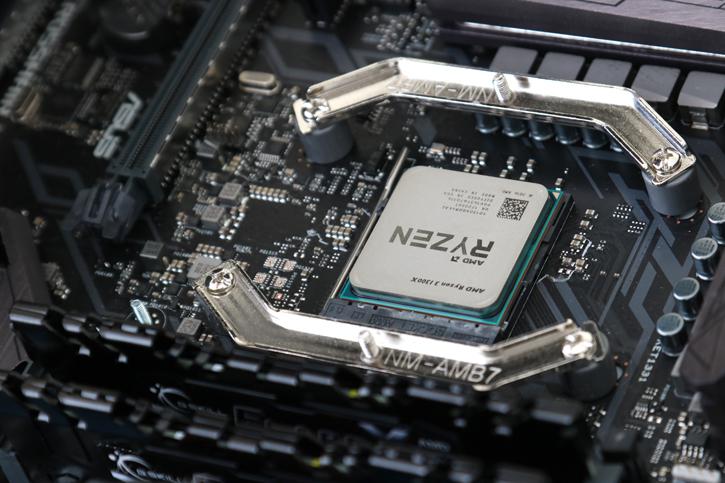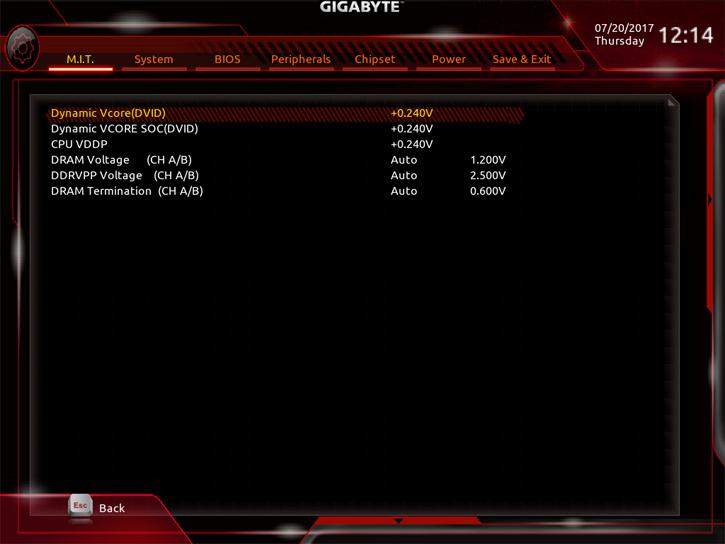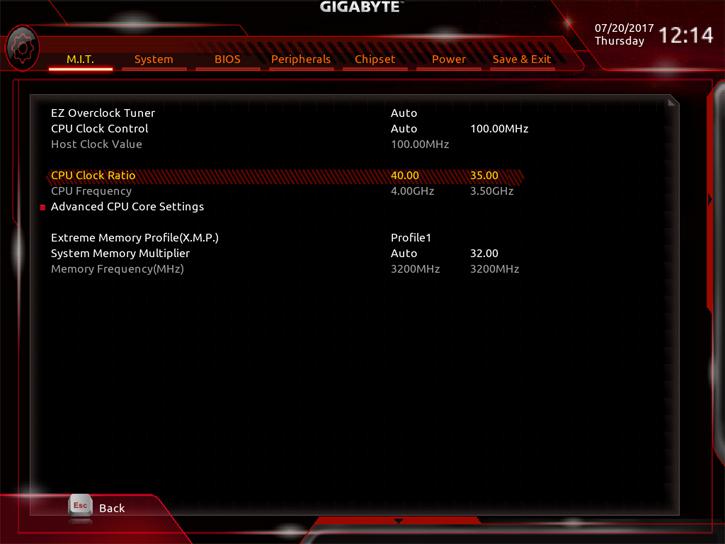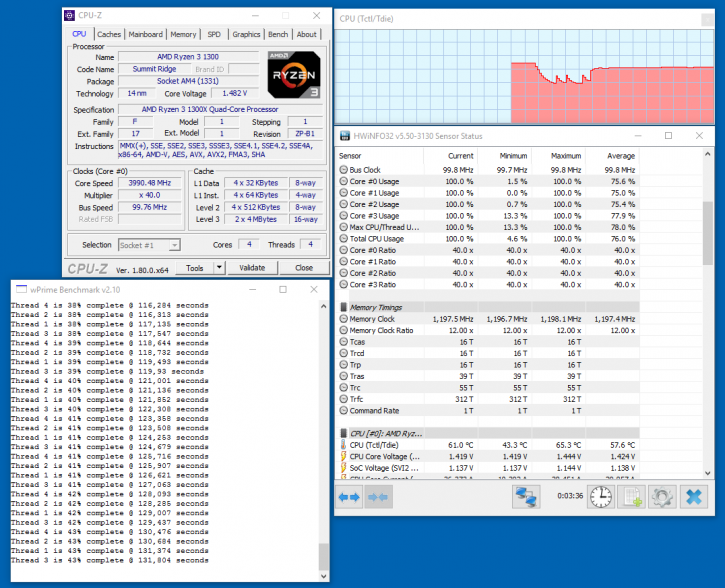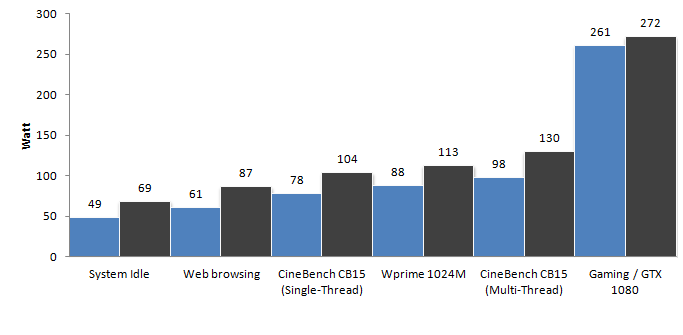Overclocking The Ryzen 3 1300X processor
Overclocking
Overclocking and tweaking then. Always invest in good hardware by the way (MOBO/PSU/Memory/Cooling), the cheaper motherboards often are not well tuned for enthusiast overclocking. Also get yourself a good power supply and proper processor cooling. Overclocking with a more core processor (it doesn't matter if that is Intel or AMD) is far more difficult than you expect it to be.
For the Ryzen 3 reference review round we'll use nothing more than a Noctua heat-pipe cooler.
Overclocking multi-core on a high clock frequency is a relatively okay to do job, but can be managed relatively easily from the BIOS. You can also use AMD's software tool of course.
The Ryzen 3 and 5, quad and six-core processors reach roughly the same values as the 8-core Ryzen 7 series. This makes sense as the reality is that the processors are the same, the Summit Ridge 8-core part with two CCXes. During our measurements, by trial and error we found that at 1.375~1.425 Volts you will end up at roughly 3.9 ~4.0 GHz. You could apply a fixed voltage, but we do recommend a voltage offset (start with +200Mv).
BIOS Overclocking
The Guru3D reader-base overclocks mostly from the BIOS to try and find the maximum stable limit. The generic overclock procedure for multiplier based overclocking is as follows:
- Leave base clock (bus) for what it is right now (100 MHz)
- Set the per core multiplier at a maximum of your liking:
- Example 1: 100MHz x 40 = 4000 MHz
- Example 2: 125MHz x 32 = 4000 MHz
- Increase CPU voltage; though AUTO works fine on many motherboards you can do it manually as well. Start at 1.350 volts (or voltage offset (start with +200Mv)) and work your way upwards into a state of equilibrium in perf and cooling temps.
- Make sure your processor is properly cooled as adding voltage = more heat
- Save and Exit BIOS / uEFI
So, the ASUS motherboard had an issue where manual voltage tweaking led to an issue. Later on, offset voltage control worked but by then we'd already swapped the mobo to a Gigabyte one.
What we did:
- Enable 4000 MHz (40 Multiplier)
- Apply 1.45V to the CPU (increase offsets to +240)
- Enable XMP on our memory kit (3200 MHz CL14)
Ryzen likes fast memory, so with this dual-channel (single rank) setup we really can recommend higher frequency memory like the 2933 and 3200 MHz kits used.
Here is an example of the Ryzen 3 1300X at 4000 MHz @ all cores. Here the stock cooler seems to run fine in the ~65 Degrees C range overclocked.
We have been able to sustain a stable 4.0 GHz on all cores. Memory wise we had 3200 MHz CL14 stable. We inserted OC benchmark results throughout the article for you to look at.
Power Consumption
Adding extra voltage to the CPU for the OC also has an adverse effect on the overall energy consumption. Below, the power consumption for the whole PC measured at the wall socket side including a GeForce GTX 1080. Blue is default, black is overclocked.

